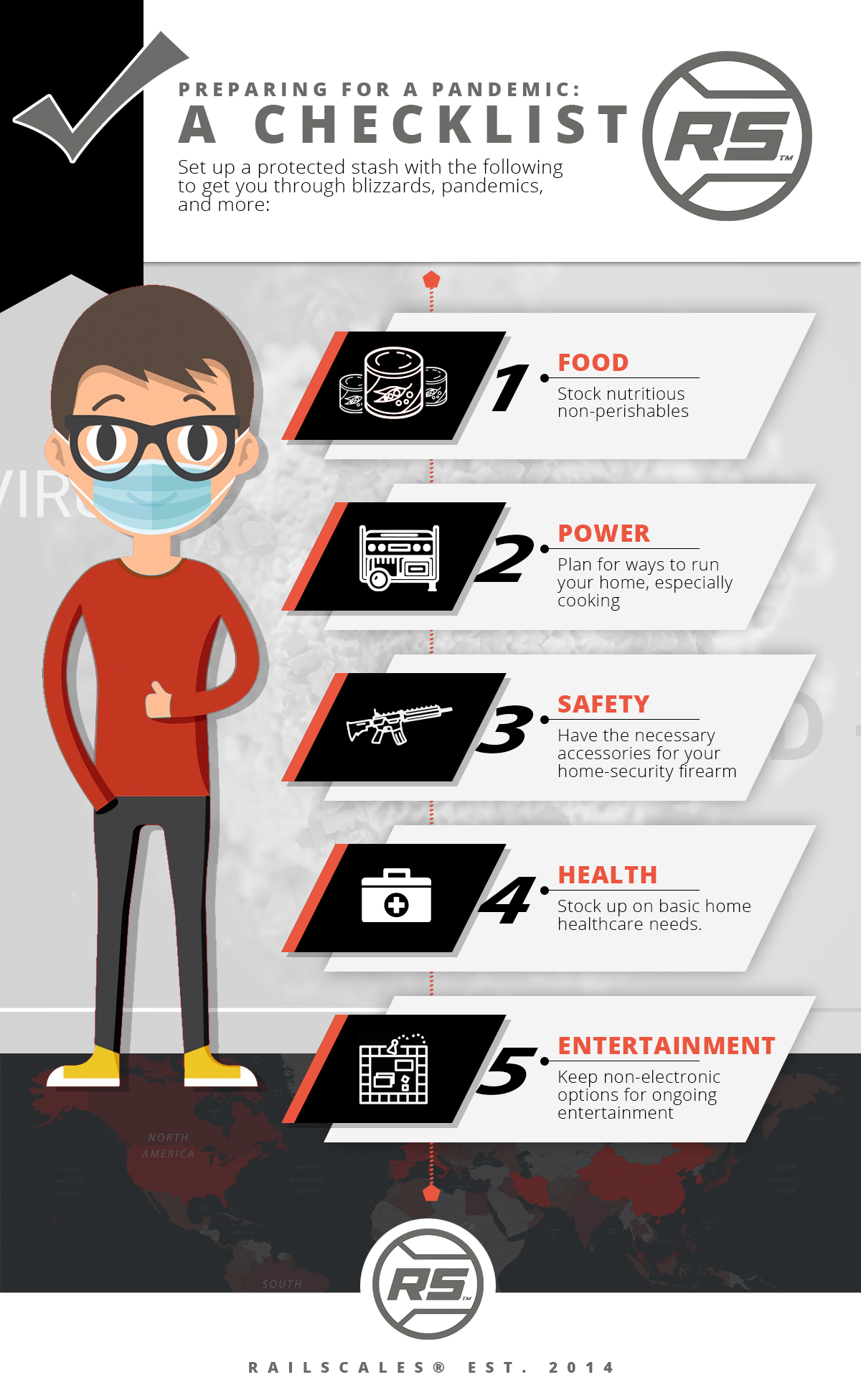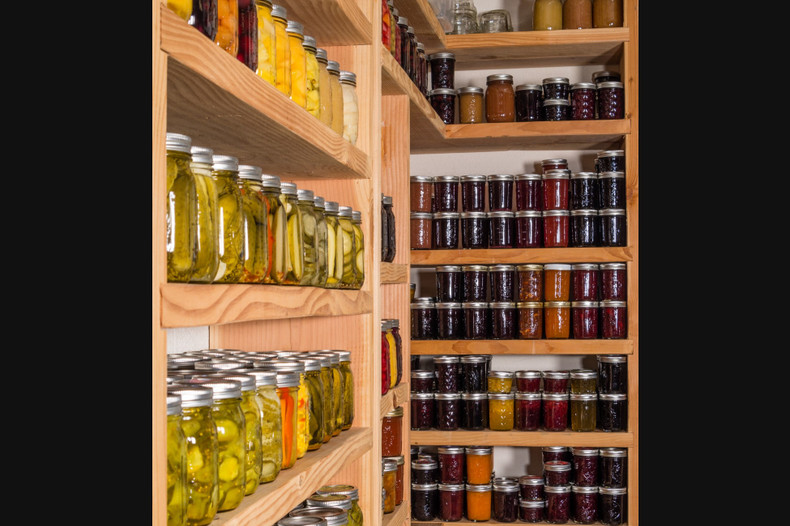With the coronavirus (COVID-19) sweeping across the nation and the world, you may be realizing that your family is woefully underprepared to be stuck at home without access to many of your usual resources. While it is too late to head out and put together a full disaster preparedness array — especially with all the toilet paper sold out in many places — it is not too late to start planning for later.
Emergency/disaster preparedness, usually just shortened to “prepping,” is something every home should do, at least to some extent. Prepping isn’t just a way to get ready for an unexpected pandemic, it’s a way to prepare for any emergency situation. From tornadoes to hurricanes, pandemics to terrorist attacks, prepping helps ensure that your family can hunker down at home safely and comfortably to ride out whatever disaster might fall.
How to Get Prepped
It’s hard to anticipate what you’ll need if you don’t know what the disaster will be. But generally, most disasters and emergency situations don’t give you enough warning that you could make it to the stores and get stocked up before they hit. How you prep should depend largely on where you live, and account for the sorts of disasters that are most likely to hit your area. On top of that, however, it’s a good idea to have at least the basics for other potential disasters too.
The other big question is how much time you should be prepared for. A good guideline is to be prepared for at least 30 days of total self-sufficiency. That means food, water, cooking, power, and basic healthcare for at least a month. As you start a basic prepper’s stash, that 30-day guideline will get you started. If you have the space, however, it’s not a bad idea to stock away what you’d need for a 60-90 day stretch. Consider disasters like Hurricane Katrina, after which many homes were without power for weeks or months, even after the water subsided. A longer stash would help sustain your family in the event that your home and community are affected in the long-term like that.
So what does all of that preparation look like realistically? Let’s break it down:

Water
This all-important element should be first on your list of prep steps. The Federal Emergency Management Agency (FEMA) recommends 1 gallon of water per person per day. For a family of four, a 30 day supply would be 120 gallons. A 90-day supply would be 360 gallons of water. However, bottled water is a finite resource. The other key element here is that you should have a reliable way to purify water — and remember that you may or may not have power you can use to boil all the water your family needs. There are hand-powered water filtration systems that filter out grime and bacteria. There are also packets you can stir into water to remove contaminants. In addition, you’ll also want a way to store any water, either before or after you purify it. Consider a rain barrel to collect water, or a large container into which you can safely store purified water once it’s been treated.
Food
The other big category of prepping that you probably expect is food — and no, we don’t necessarily want you to go to your nearest big-box store to get 30 cases of canned meat. Prepping food means considering what will provide enough nutrient value to keep your family healthy, while also lasting in storage. It also means considering the sorts of staple pantry items you could turn into filling, well-rounded, delicious meals with one or two additions. This takes a bit more planning. You’ll want to buy or make foods in the following categories:
- Dried foods — Rice, beans, pasta, and other seeds and grains are great options for filling meals. More importantly, all of these items can last indefinitely as long as they are stored correctly. It’s a good idea to get a mix of options to give your family variety when it comes time to actually eat this food. Also consider dried fruits and jerky for snacks (and potentially for cooking with). However, be careful with root vegetables. Potatoes, yams, onions, and other similar foods can keep for a while as long as they are stored in a cool, dark area. But they don’t last indefinitely, so you may need to create a habit of eating and replenishing that supply more regularly.
- Canned foods — Canned goods are also great because they can last indefinitely. On top of the usual canned fruits and veggies, consider adding in things like canned coconut milk and canned soup stock to make your meals more flavorful. Just make sure you’re getting canned items your family will actually eat, otherwise those cans of anchovies would just be a waste of space.
- Pantry items — This category includes a lot of staples you probably already have around the house, things like flour, sugar, oil, and coffee. Stock your prep food supply in much the same way you would your usual pantry. Make sure you’ve got spices, peanut butter, sugar, bouillon cubes, and so on. In addition, consider grabbing items that pack a punch of flavor to add more excitement to bland canned and dried foods. Fermented foods like kimchi and pickled vegetables are flavorful but also enduring pantry items.
- Frozen foods — In some instances, like we’re seeing now with the coronavirus, you may be in an emergency situation but still have access to a working fridge and freezer. While you can’t always rely on that as an option, especially when you’re without power for days, having frozen foods on hand can provide you with a lot more variety. Consider having a chest freezer separate from your usual household goods, and stock it full of staple items like frozen meat and vegetables. You can also freeze butter, herbs, soup or stock, and bread to enhance your pantry staples.
Keep in mind, too, that if you have pets, you’ll need a way to keep them fed! Make sure you have enough canned and dry food to last your pets the same amount of time you’re preparing for your family — or more, considering that pet stores often take longer to reopen than grocery stores.
Also remember that you’ll need a safe way to store all of the dried goods and pantry items so they aren’t a flashing neon sign for pests. Put boxed and bagged foods into sealed containers, or store in large storage bins to make sure they aren’t a temptation for bugs and rodents. Keep everything stored in a cool, dry place to make sure it will last as long as possible.
Power
In emergency situations, you can’t always rely on steady power from your electric company. If the power goes down, you should have a good backup option specifically to help with temperature control and cooking. Consider a generator or solar panels for a more durable secondary power option. Whether you go that big or not, make sure you also have candles and flashlights, plus extra batteries and lighters/matches. You’ll also want to have a few portable heat sources and plenty of extra blankets if you live somewhere colder.
In terms of non-powered cooking, a gas grill is easier, but a charcoal grill offers more longevity, especially if you live somewhere that you can harvest wood to use when the charcoal runs out. Also have a couple of camp stoves with plenty of fuel, especially if you don’t have a safe way to build a fire near your home.
Protection
Many disaster situations come with a level of lawlessness. It’s less the case with the coronavirus outbreak, but natural disasters and terrorist attacks have led to riots and looting, especially in times of ongoing scarcity. As a firearm owner, we’d bet you have a plan already for home security, but this is your reminder to create a comprehensive plan specifically for emergency situations like this. Make sure that anyone in the household who will be handling the firearms is trained and comfortable — and we probably don’t need to remind you that everyone should schedule routine range time to keep up that level of comfort and experience.
In addition, make sure you have the appropriate ammo and accessories for your home security firearm. For example, if your preferred option is an AR15, consider a lightweight AR15 rail grip — like our M-LOK and KeyMod rail scales — to help any user get a better grip on the forend. But, as always, make sure you are practicing with any custom AR parts before the emergency situation is at hand. That lightweight AR15 rail grip won’t do much good if you aren’t used to using it to get a grip.
Health/First Aid
A lot of your routine will go out the window during a disaster situation, but that doesn’t mean things like basic health and hygiene have to completely go away. Since fresh fruits and vegetables may be harder to come by, set aside a few bottles of vitamins to give your family that nutrient boost. Also make sure you have basic hygiene care like extra toothpaste, soap, and shampoo. This is also your reminder to have a stash of toilet paper, tissues, and paper towels on hand — so you don’t have to brave the masses and fight for a few rolls the way we’ve seen in news stories lately. It’s also a good idea to have a few packages of baby wipes on hand to keep yourselves clean in the event that your showers are unusable for a time.
In addition to basic hygiene, be prepared to take care of a range of first aid needs on your own. If someone is injured, getting them to a hospital may not be possible immediately. Start with a basic first-aid kit full of bandaids, gauze, and Neosporin, and then add to it to bolster the set. Add in a basic splint, butterfly bandages, alcohol, hydrogen peroxide, and even some super glue (which was initially developed to work in place of stitches!) to patch up most bumps and bruises. On top of that, make sure you have pain relievers, fever reducers, allergy medication, and some basic cough and cold medications.
Entertainment
Now, this isn’t exactly a necessity for prepping, but planning for some additional non-powered entertainment is a great way to make sure your kids don’t drive you crazy in the first hour after disaster hits. Consider options that are particularly engaging and require input from the participant; things like sketchbooks and notebooks encourage the user to get their brain in gear. Crayons and colored pencils are good long-lasting options, and only stock away sealed paints or they could dry out. Also consider reusable entertainment like difficult puzzles and board games that will keep everyone engaged for longer stretches of time. Additionally, consider stashing away some activity-inducing entertainment that they can safely use indoors, like a jump rope or roller skates — just make sure there’s also a safe place for your kids to get active inside without breaking things.
Take Time to Get Prepared
This is a lot of information, and probably looks like an incredibly overwhelming list. Remember that you can build up your preparedness stash over time, little by little, to make it more manageable. Also, don’t forget that some of the items on this list will need to be checked on occasionally, and you’ll want to keep up your firearm handling skills. If you’ll be adding custom AR parts to your firearm, make sure you’re comfortable with the setup before it comes to a disaster situation. Find AR15 rail grips and other custom AR parts from RailScales online.

